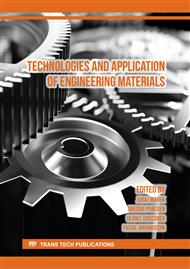p.81
p.93
p.101
p.111
p.119
p.127
p.135
p.143
p.151
Study on some Properties of Sustainable Mortar Incorporating Processed Waste Tea Ash
Abstract:
The use of industrial waste materials as a substitute for cement in the manufacture of mortar is an alternative approach to reduce carbon dioxide emissions in building construction. In this study, processed waste tea ash (PWTA) obtained from the extraction tea plant was used to partially replace 0-40% cement in the manufacture of mortar. The effects of PWTA on the basic engineering properties of mortar are evaluated and compared to mortar without PWTA. Test results showed that workability and density of mortar decreased with increases in the PWTA content. Furthermore, no decline in compressive strength of concrete was observed up to 20% replacement of cement with PWTA at 7, 28 and 90 days and beyond that, the compressive strength decreased. Results obtained from this study indicate that PWTA can be used as partial replacement of cement up to 20% with comparable strength with normal mortar. This approach helps to minimize the usage of cement in mortar production and can reduce the negative impact of PWTA on the environment.
Info:
Periodical:
Pages:
119-125
Citation:
Online since:
June 2023
Keywords:
Price:
Сopyright:
© 2023 Trans Tech Publications Ltd. All Rights Reserved
Share:
Citation:



